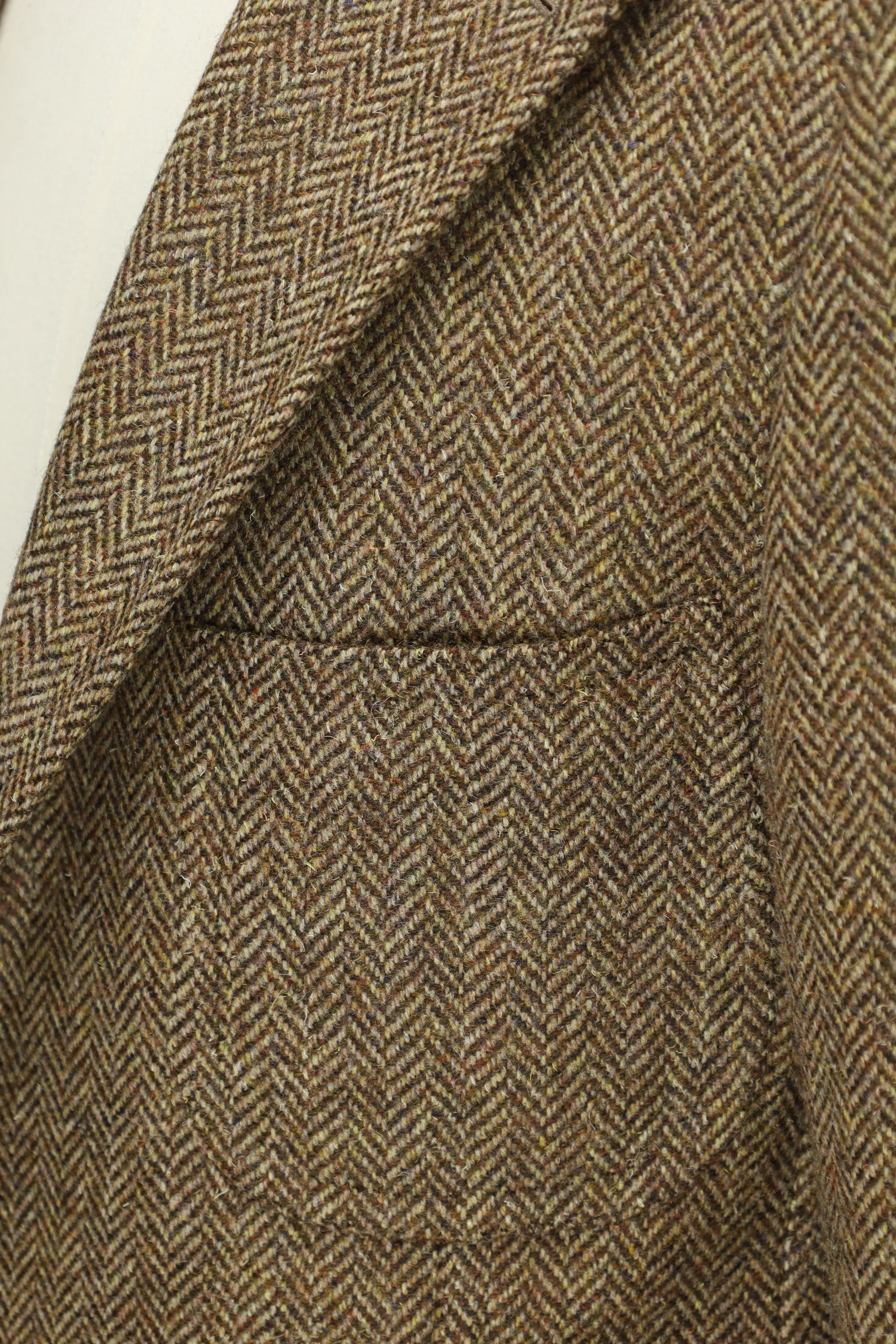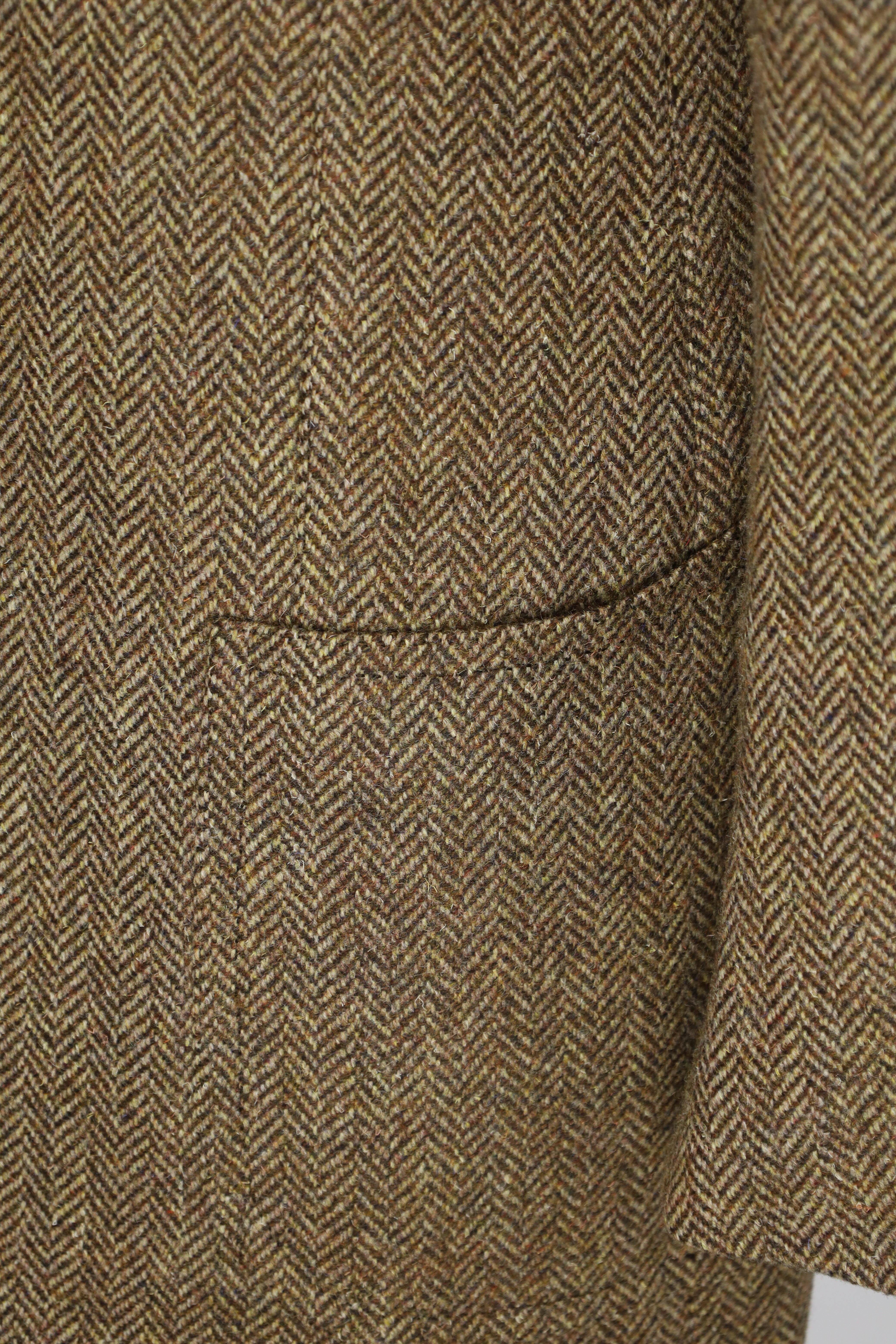





Cesare Attolini Brown Shetland Tweed Herringbone Jacket
52 IT / 42 US / Large
Rare Find: This Cesare Attolini Brown Shetland Tweed Herringbone Jacket is a unique blend of Scottish Shetland tweed and Neapolitan tailoring, making it a rare gem. This piece not only showcases exceptional craftsmanship but also the marriage of traditional Scottish material with Italian design finesse, offering a distinct and sophisticated addition to any wardrobe.
Each Cesare Attolini garment is made entirely by hand in the Casalnuovo tailor’s shop, on the outskirts of Naples. It takes 25 to 30 hours to make a suit. 130 tailors work every day, each dedicated to performing a single step. Absolute perfectionism.
Composition: 100% Shetland Tweed
Color: Brown
Pattern: Herringbone
See how we measure our sartorial items
Discover the customization possibilities by visiting our tailor alteration guide
Shipping
- Complimentary shipping on orders over €200 (Netherlands), €500 (EU), and €1,000 (rest of world).
- Orders under these amounts: shipping rates depend on your country.
- Customs duties or import fees may apply and are the customer’s responsibility. The courier may charge additional fees.
Returns
- You have the right to return your order within 14 days of delivery.
- If you wish to return an item, please notify us within 48 hours of receiving your order.
- Return shipping is at the customer’s expense.
- A 10% restocking fee will be deducted from your refund for all returns.
Please carefully review all measurements and quality control notes in the listing before purchasing. Return shipments have an environmental and economic impact. For any questions or if you need help, feel free to contact us before placing your order.
General Note: While we inspect each item to ensure its quality, please note that minor imperfections may be present due to the preloved nature of the garments. We strive to represent every item accurately, but subtle signs of wear may sometimes go unnoticed. We appreciate your understanding and commitment to sustainable luxury.
Choose options







Discover the
Sartorial Details

Full Canvas Construction
A sartorial jacket - or coat - needs an interlining that will help give it shape and mold it. Canvas gives the item a tailored and crafted look. In short, it breathes life into it. Purely technical, canvas is made from either horsehair, wool, mohair or camel hair. It could also be a mix of them all, with varying thickness and weight. The canvas is stitched to the jacket, often by hand, thus making the canvas pieces 'floating' in the middle of the inner and outer cloth. This gives the jacket added flexibility. The canvas runs from the upper parts, all the way down to the end of the jacket. After you wear your canvassed suit for a while, it will begin to take your shape and look incredibly natural.

La Spalla Camicia
Spalla Camicia roughly translates to 'shirt sleeve' in Italian and is a shoulder style created and popularized by Neapolitan tailors. The name 'shirt sleeve' was so coined due to the characteristic shirring found at the sleeve's head where the fullness of the larger sleeve collapses. Rather than having the head of the sleeve turned back and stitched inside, the head is lapped under and stitched along the top.

Handmade Buttonhole
Handmade buttonholes are made using a chain of knotted loops called purl stitches that make them strong and visually distinctive. It takes about five seconds to sew a regular buttonhole with a machine – a single handmade buttonhole takes about 10 minutes to sew.

Two-Button Closure
The jacket has a two-button closure which keeps the profile neat.

Patch Pocket
Patch pockets, with their rugged functionality, were unsurprisingly adopted by the military for both shirts and jackets.

Neapolitan Darts
Neapolitan master tailors add two darts - think of them as pinched seams - to ensure the jacket’s body achieves a slim silhouette. The process, called mezzo punto riprese, is done entirely by hand.

Kissing Buttons and Handmade Buttonholes
Also known as stacked buttons or waterfall buttons, kissing buttons are associated with Italian tailoring as Italian tailors make their jacket sleeve buttons in the kissing style. In this style, buttons touch each other and overlap one another. Handmade buttonholes; Even this step, apparently the simplest, is treated with an abundance of detail. Attaching the buttons is a job that requires patience and must be completed to perfection.

Patch Pocket
Patch pockets, with their rugged functionality, were unsurprisingly adopted by the military for both shirts and jackets. The lower patch pockets on a Neapolitan jacket are modeled after the tasca a pignata style, and when done in its purest form, are easily recognizable with a rounded-bottom and a unique shape


size
52 IT / 42 US / Large


 Curator's Description
Curator's Description Materials
Materials